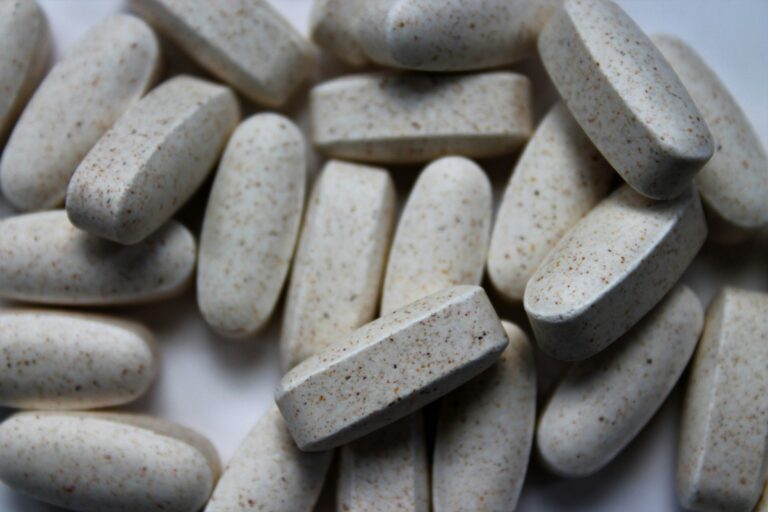In 2018, the detection of nitrosamines in sartan-type drugs, medications to treat high blood pressure and heart failure, set off all the alarm bells.
The presence of N-nitrosodimethylamine (NDMA) in Valsartan was the first indication. Later appearances of other nitrosamines in antacid and diabetes drugs demonstrated that it was not an isolated case, forcing their preventive withdrawal.
Since that moment, regulatory agencies have put the spotlight on reviewing nitrosamine presence in active pharmaceutical ingredients (APIs) and pharmaceutical products. Manufacturers and marketing authorization holders are encouraged to follow the harmonized guidelines set by the Food and Drug Administration (FDA) and the European Medicines Agency (EMA) to manage the potential presence of nitrosamines in APIs and drug products.
Nitrosamines: A potential Risk in drug discovery and development
Nitrosamines are a broad class of chemical compounds containing the nitroso functional group (-N=O) attached to an amine. They are formed when a compound containing a secondary or tertiary amine reacts with a nitrosating agent such as nitrites in excipients used to formulate a drug, usually in an acidic environment.
Nitrosamines can be formed during the synthesis, manufacture, and shelf-storage of drug products. Their presence raises concern due to their carcinogenic and genotoxic potential.
Regulatory guidelines require manufacturers to establish whether nitrosamines could be present, using a three-step mitigation strategy. The strategy is based on:
Step 1: Risk assessment.
Step 2: Confirmatory testing.
Step 3: Risk mitigation.
Any findings in step 2 above the acceptable intake (AI) limits must be reported to the relevant regulatory agencies. This limit is generally determined based on database and literature searches for carcinogenicity and bacterial mutagenicity data.
Nitrosamines are considered highly concerning by the ICH M7 (R2) Guideline, which categorizes them as a “cohort of concern”. Certain structural groups are so potent that even small amounts could pose a significant carcinogenic risk, which lowers their acceptable AI limits.
Current problems with NDSRIs and their carcinogenic potential
The plot thickens when nitrosamines are specifically associated with APIs, which are compounds named Nitrosamine Drug Substance Related Impurities (NDSRIs). These complex nitrosamines arise due to the inherent chemical structure of the API or its degradation products.
Determining an AI limit for NDSRIs is more complex compared to small molecule nitrosamines because there is no available safety data (e.g. rodent carcinogenicity data) due to their unique and specific structure associated with each API.
Initially, regulatory agencies set the limit for NDSRIs at 18 ng/day, using the same one as for dialkyl nitrosamines. Nevertheless, this limit was far from what was achievable, and suddenly many drugs were at risk of withdrawal.
In 2023, the EMA and the FDA updated their nitrosamine guides and included the Carcinogenic Potency Categorization Approach (CPCA) for assessing the NDSIR’s potential risk when there is insufficient mutagenicity data. The CPCA is based on the idea that a prediction of a nitrosamine’s mutagenic potential and carcinogenic potency can be generated based on the structural features.
Quantitative SAR (Structure-Activity Relationship) methods identify a robustly tested surrogate, a molecule similar to the NDSRI in structure containing an N-nitroso group and reactivity for which carcinogenicity data is available. This surrogate helps to generate an estimate of carcinogenic potency from which an AI limit can be scientifically determined.
CPCA consists of 5 categories, and the majority of NDSRIs, according to this classification, will fall in potency category 5. The recommended AI limit in CPCA 5 is 1500 ng/day, releasing the burden on many pharmaceuticals that were in the limelight.
Detect NDSRIs in your API with AMSbiopharma analytical methods
Not only is establishing an AI limit difficult, but it is also difficult to detect the NDSRI itself in the sample. High sensitivity and specificity are required to detect NDSRIs at very low levels, often in the parts per billion (ppb) range, which can be technically demanding.
To assist in the testing of samples, the FDA has published several methods that can be used to determine the nitrosamine content of an API or finished drug product. Similarly, the European Directorate for the Quality of Medicines and Healthcare published a list for the same purpose, including GC-MS/MS and HPLC-MS/MS analytical techniques.
At AMSbiopharma, we are committed to providing the best analytical solutions. Our Liquid Chromatography-Tandem Mass Spectrometry (LC-MS/MS) and GC-MS/MS nitrosamine analytical methods allow the detection and quantification of new nitrosamines in different drug products and excipients.Our deep knowledge of analytical method development has allowed us to increase the sensitivity to achieve levels of detection and quantification well below the actual regulatory requirements in different drug products.
As part of our routine analysis, we perform method validation for each particular mix. We can also provide custom-made analytical solutions to your specific needs in nitrosamine risk assessment.
References
-
- Campbell M. Addressing the saga of nitrosamine contamination in drugs. Chemistry World [Internet]. 2021 Nov 29 [cited 2024 Jul 22]. Available from: https://www.chemistryworld.com/news/addressing-the-saga-of-nitrosamine-contamination-in-drugs/4018123.article
- Elder D. Nitrosamine Drug Substance-Related Impurities (NDSRIs) [Internet]. European Pharmaceutical Review. 2022 [cited 2024 Jul 22]. Available from: https://www.europeanpharmaceuticalreview.com/article/172306/nitrosamine-drug-substance-related-impurities-ndsris/
- European Medicines Agency. Nitrosamines: Questions and answers for marketing authorization holders/applicants [Internet]. Amsterdam, Netherlands: EMA; 2023 [cited 2024 Jul 22]. Available from: https://www.ema.europa.eu/en/documents/opinion-any-scientific-matter/nitrosamines-emea-h-a53-1490-questions-answers-marketing-authorisation-holders-applicants-chmp-opinion-article-53-regulation-ec-no-726-2004-referral-nitrosamine-impurities-human-medicinal-products_en.pdf
- European Medicines Agency. Nitrosamine impurities in medicinal products [Internet]. Amsterdam, Netherlands: EMA; 2020. [cited 2024 Jul 22]. Available from: https://www.ema.europa.eu/en/documents/opinion-any-scientific-matter/nitrosamines-emea-h-a53-1490-assessment-report_en.pdf
- International Council for Harmonisation of Technical Requirements for Pharmaceuticals for Human Use (ICH). ICH Harmonised Guideline: Assessment and Control of DNA Reactive (Mutagenic) Impurities in Pharmaceuticals to Limit Potential Carcinogenic Risk M7(R2) [Internet]. Geneva: ICH; 2023 [cited 2024 Jul 22]. Available from: https://database.ich.org/sites/default/files/ICH_M7%28R2%29_Guideline_Step4_2023_0216_0.pdf
- U.S. Food and Drug Administration. Control of nitrosamine impurities in human drugs. Guidance for Industry. [Internet]. Silver Spring, MD: FDA; 2021 [cited 2024 Jul 22]. Available from: https://www.fda.gov/media/141720/download
- U.S. Food and Drug Administration. Recommended acceptable intake limits for nitrosamine drug substance-related impurities (NDSRIs). Guidance for industry. [Internet]. Silver Spring, MD: FDA; 2023 [cited 2024 Jul 22]. Available from: https://www.fda.gov/media/170794/download
-
- World Health Organization. Information note nitrosamine impurities [Internet]. 2019 Nov 20 [cited 2024 Jul 22]. Available from: https://www.who.int/news/item/20-11-2019-information-note-nitrosamine-impurities

